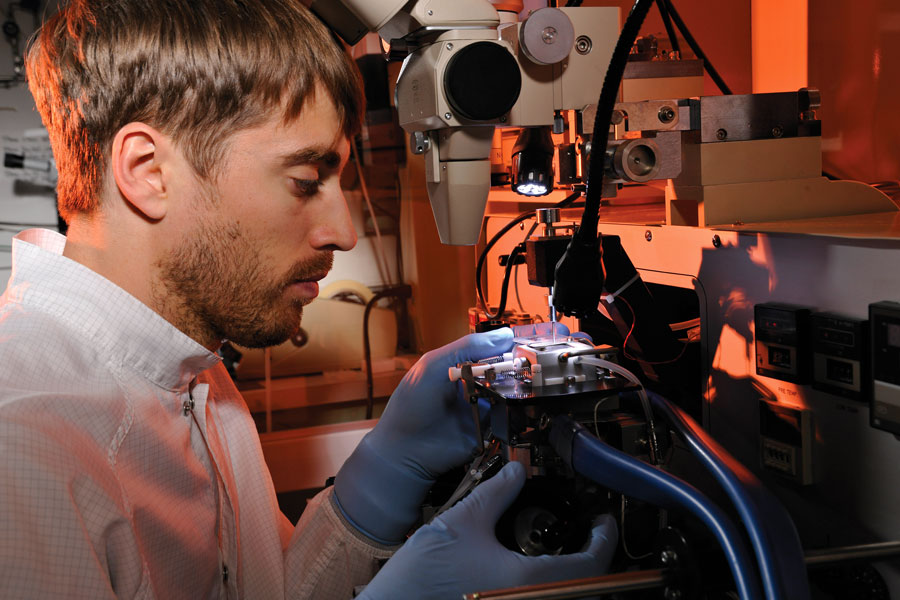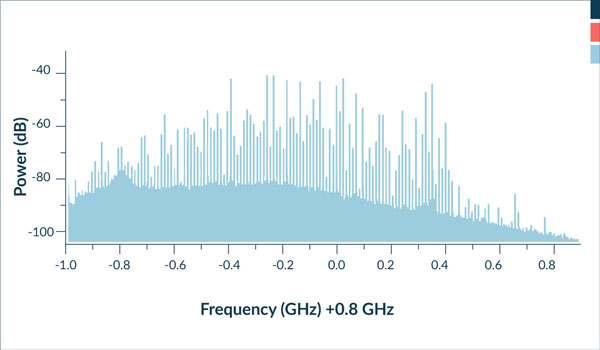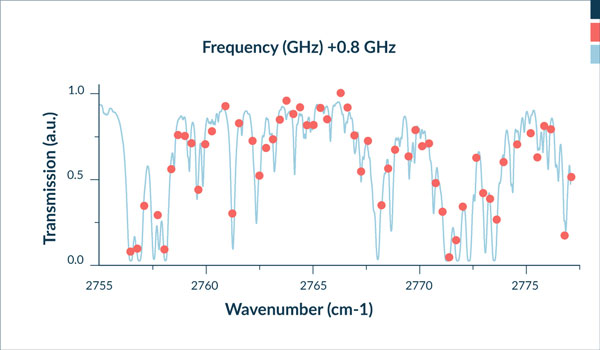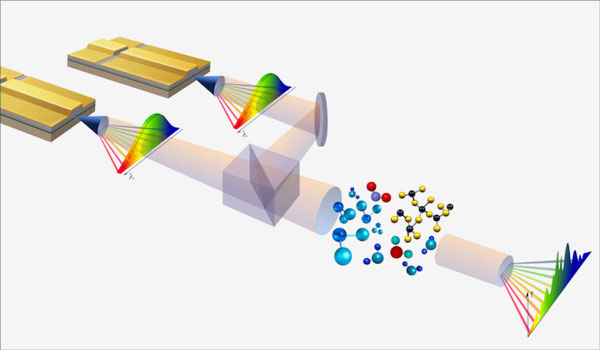Above:
MDL maintains advanced laser packaging capabilities, including this die bonder that enables precise placement and soldering of semiconductor laser chips.
Dual-Comb Spectroscopy
Fast Spectra, but High-Resolution and Broadband Too
Mahmood Bagheri - Clifford Frez – Mathieu Fradet
Modern spectroscopic systems can accurately measure the real-time dynamics of mixed atomic and molecular species with weak spectral features, assuming the availability of a broadband source in the relevant wavelength band with high spectral resolution and fast acquisition time. Dual-comb spectroscopy (DCS) offers an unprecedented opportunity to simultaneously acquire broadband and high-resolution spectra within microseconds and is characterized by high signal-to-noise ratio, a small footprint, and implementation free of moving parts. In this technique, shown in the multi-heterodyne spectrum, two combs with slightly different repetition rates are interfered on a photodiode generating a radio frequency (RF) comb composed of distinguishable heterodyne beats between pairs of optical comb teeth. This RF comb is easily accessible with RF electronics and contains the relevant spectral information in the optical comb spectra. To perform spectroscopy, a sample is introduced into one or both optical beam paths. The sample’s response is encoded on the comb light; this response is then recovered through heterodyne detection. Furthermore, DCS allows using both amplitude and phase information. The latter feature is of great importance in turbulent and noisy environments.
MDL, in collaboration with the U.S. Naval Research Laboratory, demonstrated the first electrically pumped interband cascade laser (ICL) optical frequency combs. This demonstration has filled the spectral gap around 3–4 µm previously dominated by optically pumped combs with larger complexity and unsuitability for scarce power applications, and it has allowed us to extend these powerful spectroscopic techniques into a spectral region of electromagnetic spectrum where a large fraction of the absorption features associated with carbon-hydrogen bonds are clustered. In contrast to the well-established single-mode distributed feedback lasers (DFB) that probe a small fraction of the optical spectrum at a time, the ICL combs are equivalent to an array of phase-locked DFB lasers that probe multiple spectral regions concurrently with higher precision and sensitivity. The ICL combs allow for broadband and high resolution (<1 MHz) sensing within the same acquisition, utilizing both amplitude and phase information.
Precise control of the ICL comb lasers’ parameters, enabled by microfabrication techniques used in the processing of these devices, has allowed us to achieve combs with a slight mismatch in repetition frequency (<0.1% of the center frequency). Therefore, we have been able to map > THz of optical bandwidth into > 600 MHz of electrical spectrum, as shown below. We have used these comb lasers to detect and analyze methane gas in a multi-pass cell configuration. The spectroscopic measurement below shows a one- millisecond acquisition and fit for a 76-meter multi-pass cell with pure methane at atmospheric pressure. The measurement sensitivity demonstrated here (~ ppm) can be further improved (sub-ppm) by tuning the ICL comb emission wavelength to the absorption peak of methane gas (3060 cm-1).
Optical bandwidth: Multi-heterodyne spectrum extracted from a beating signal acquired over 1 ms.
+ Larger image
Spectroscopic measurement (scattered red dots) and fit (solid curve) for a 76 m multi-pass cell with pure methane at atmospheric pressure.
+ Larger image
Dual-comb spectroscopy set-up: Two slightly different ICL combs are mixed and detected by a single photoreceiver. As a result of the comb structure, each pair of optical teeth yields an rf heterodyne signal at a unique rf frequency. The rf teeth can be tightly packed such that a few THz of optical spectrum can be squeezed into a few GHz of electrical signal.
+ Larger image





